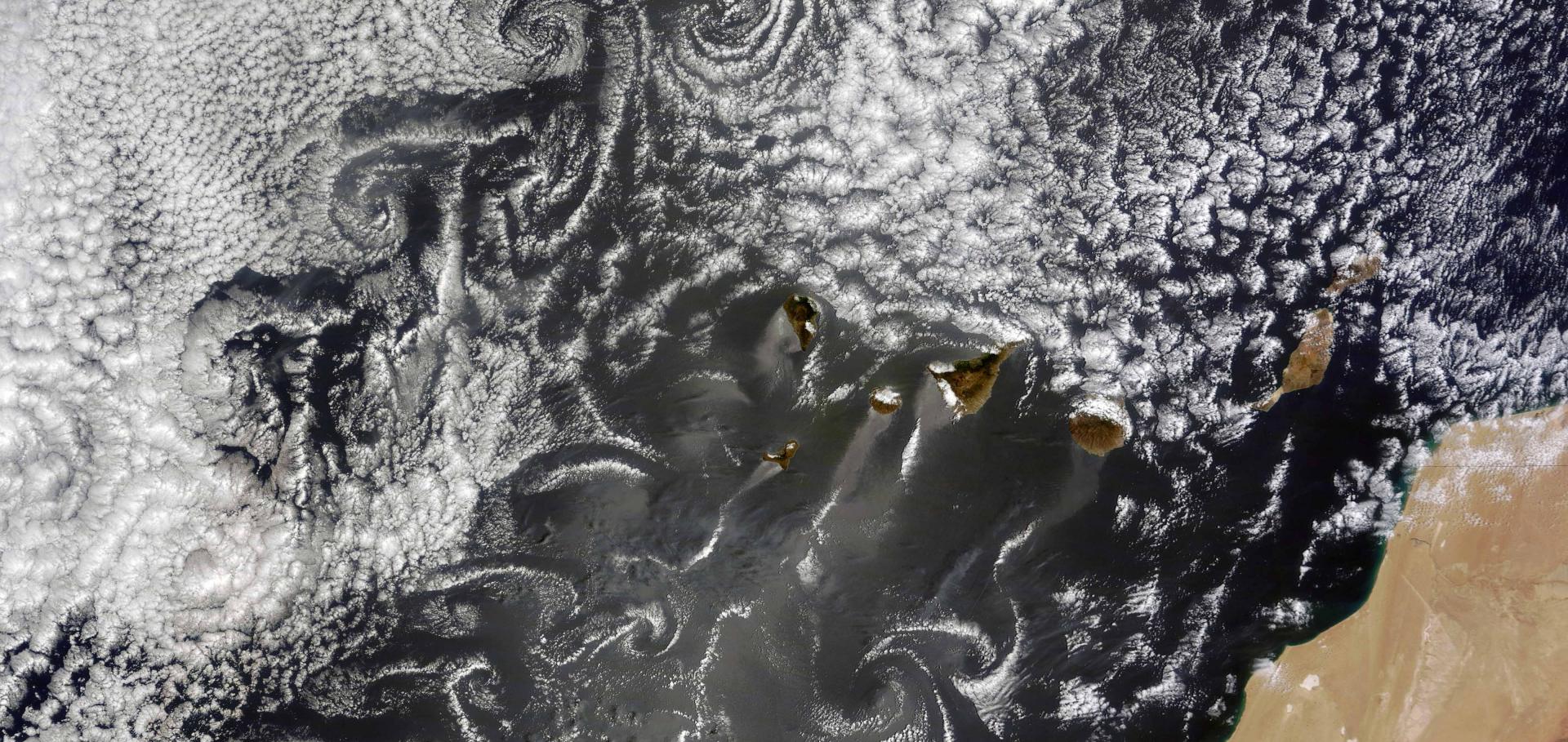Glaciation of liquid clouds, snowfall and reduced cloud cover at industrial aerosol hot spots
Science American Association for the Advancement of Science 386:6723 (2024) 756-762
Abstract:
The ability of anthropogenic aerosols to freeze supercooled cloud droplets remains debated. In this work, we present observational evidence for the glaciation of supercooled liquid-water clouds at industrial aerosol hot spots at temperatures between −10° and −24°C. Compared with the nearby liquid-water clouds, shortwave reflectance was reduced by 14% and longwave radiance was increased by 4% in the glaciation-affected regions. There was an 8% reduction in cloud cover and an 18% reduction in cloud optical thickness. Additionally, daily glaciation-induced snowfall accumulations reached 15 millimeters. Glaciation events downwind of industrial aerosol hot spots indicate that anthropogenic aerosols likely serve as ice-nucleating particles. However, rare glaciation events downwind of nuclear power plants indicate that factors other than aerosol emissions may also play a role in the observed glaciation events.ICON-HAM-lite: simulating the Earth system with interactive aerosols at kilometer scales
Atmospheric Chemistry and Physics Preprints European Geosciences Union (2024)
Abstract:
Aerosols strongly influence Earth's climate as they scatter and absorb radiation and serve as condensation nuclei for cloud droplets and ice particles. New Earth system models that run at kilometer resolutions allow us to examine long-standing questions related to these interactions. To perform kilometer-scale simulations with the Earth system model ICON-MPIM, we developed the one-moment aerosol module HAM-lite. HAM-lite was derived from the two-moment module HAM. Like in HAM, aerosols are represented as an ensemble of log-normal modes. Unlike in HAM, aerosol sizes and compositions are prescribed, which reduces the computational costs significantly. Here, we present a first global simulation with four aerosol modes at a resolution of five kilometers and over a period of one year. The simulation captured key aerosol processes including, for example, the emission of dust aerosols by convective storms in the Sahara and the interactions between sea salt aerosols and tropical cyclones in the Pacific.Synoptic Scale Controls and Aerosol Effects on Fog and Low Stratus Life Cycle Processes in the Po Valley, Italy
Geophysical Research Letters Wiley 51:20 (2024) e2024GL111490
Abstract:
Fog and low stratus clouds (FLS) form as a result of complex interactions of multiple factors in the atmosphere and at the land surface and impact both the anthropogenic and natural environments. Here, we analyze the role of synoptic conditions and aerosol loading on FLS occurrence and persistence in the Po valley in northern Italy. By applying k‐means clustering to reanalysis data, we find that FLS formation in the Po valley is either based on radiative processes or moisture advection from the Mediterranean sea. Satellite‐based data on FLS persistence shows longer persistence of radiatively formed FLS events, likely due to air mass stagnation and a temperature inversion. Ground‐based aerosol optical depth observations further reveal that FLS event duration is significantly higher under high aerosol loading. The results underline the combined effect of topography, moisture advection and aerosol loading on the FLS life cycle in the Po valley.Multifractal Analysis for Evaluating the Representation of Clouds in Global Kilometre-Scale Models
Geophysical Research Letters American Geophysical Union (2024)
Combined Impacts of Temperature, Sea Ice Coverage, and Mixing Ratios of Sea Spray and Dust on Cloud Phase Over the Arctic and Southern Oceans
Geophysical Research Letters Wiley 51:20 (2024) e2024GL110325


